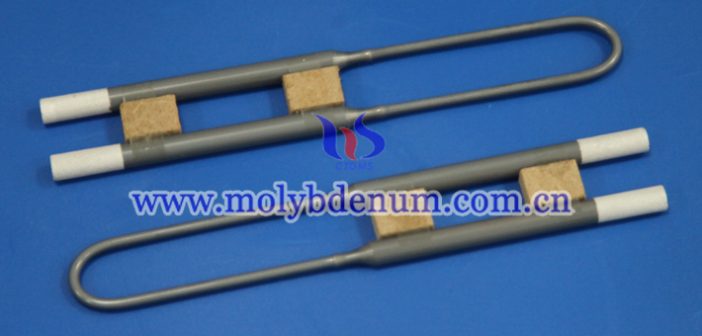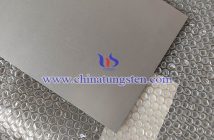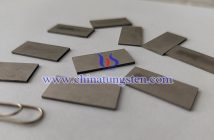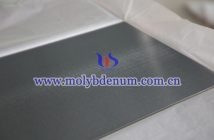Molybdenum disilicide heating element, also known as MoSi2 heating element, MoSi2 heater, silicon molybdenum rod or molybdenum disilicide heater, is an excellent resistance heating element with the advantages of high temperature resistance, low aging, anti-oxidation.
They are commonly used in various heat treatment furnaces, denture sintering furnaces, experimental electric furnaces, vacuum furnaces, tunnel kilns, roller kilns, casting furnaces, smelting furnaces, glass furnaces and other high-temperature equipment.
According to different shapes, MoSi2 heating elements can be divided into straight rods, U-shaped rods, W-shaped rods, gun-shaped rods, five-section rods, grooved rods, single-threaded rods, and bent right-angle rods. In addition, there are special-shaped products such as MoSi2 through tubes, MoSi2 thermocouple protection tubes, and MoSi2 probes.
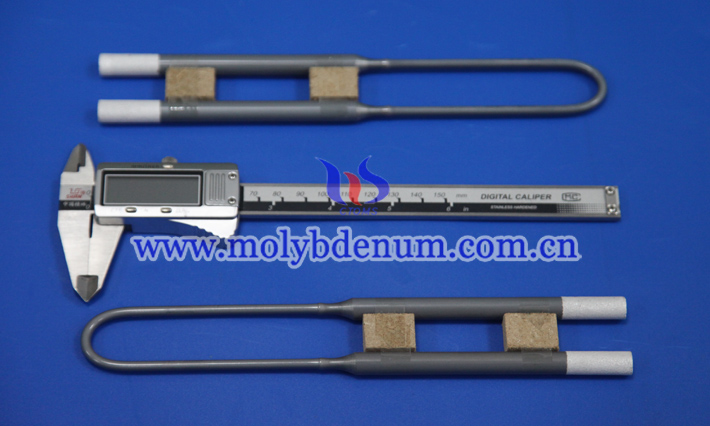 No matter what shape they are, a bright and dense quartz glass film will be formed on the surface to protect the inner layer of the silicon molybdenum rod from oxidation when they are used in a high temperature oxidizing atmosphere. However, when the surface temperature of the element is greater than 1700 degrees Celsius, the quartz glass film will melt, gather into droplets, and lose its protective effect. In addition, the components are not suitable for long-term use in the range of 400-700 °C, otherwise they will be pulverized due to strong oxidation at low temperature.
No matter what shape they are, a bright and dense quartz glass film will be formed on the surface to protect the inner layer of the silicon molybdenum rod from oxidation when they are used in a high temperature oxidizing atmosphere. However, when the surface temperature of the element is greater than 1700 degrees Celsius, the quartz glass film will melt, gather into droplets, and lose its protective effect. In addition, the components are not suitable for long-term use in the range of 400-700 °C, otherwise they will be pulverized due to strong oxidation at low temperature.
The operating temperature of molybdenum disilicide heating elements is generally 500-1700 ℃. The use temperature of heating elements with different specifications is different; the same heating element can be used at different temperatures in different atmospheres. For example, under air, the operating temperature of the 1700 type element is 1700°C, and the 1800 type element is 1800°C; under nitrogen, the 1700 type element is 1600°C, and the 1800 type element is 1700°C; under nitrogen, the 1700 type and 1800 type elements are used. Both are 1100-1450℃.
In terms of resistance characteristics, the resistivity of molybdenum disilicide heating elements increases with temperature; under normal operating conditions, the resistance generally does not change with the length of use.

